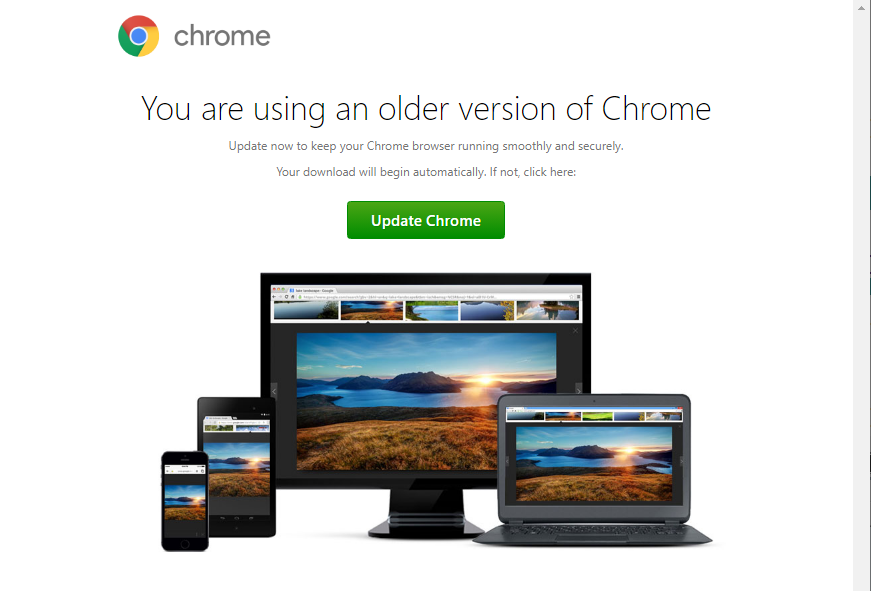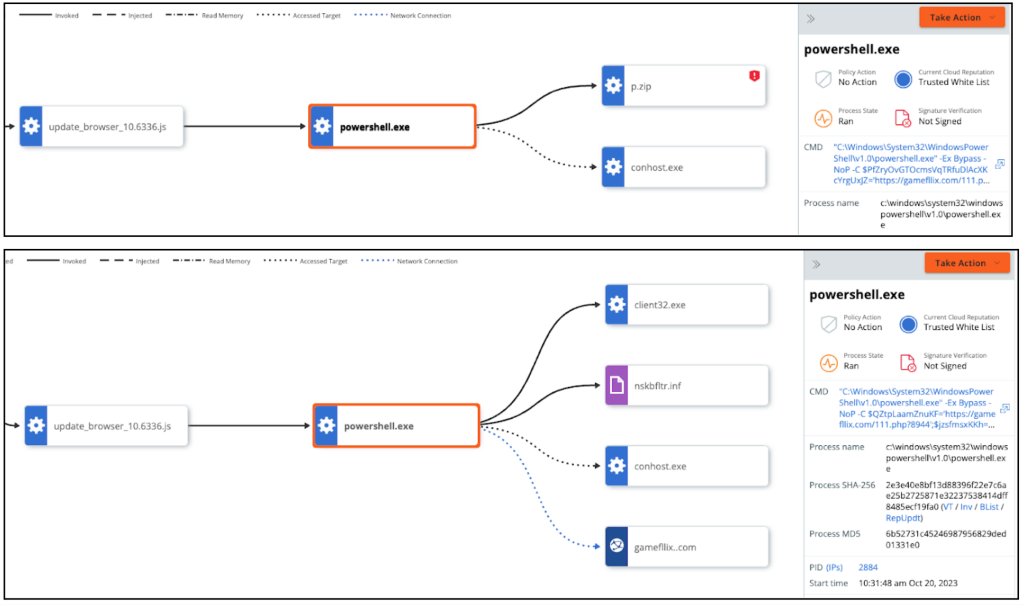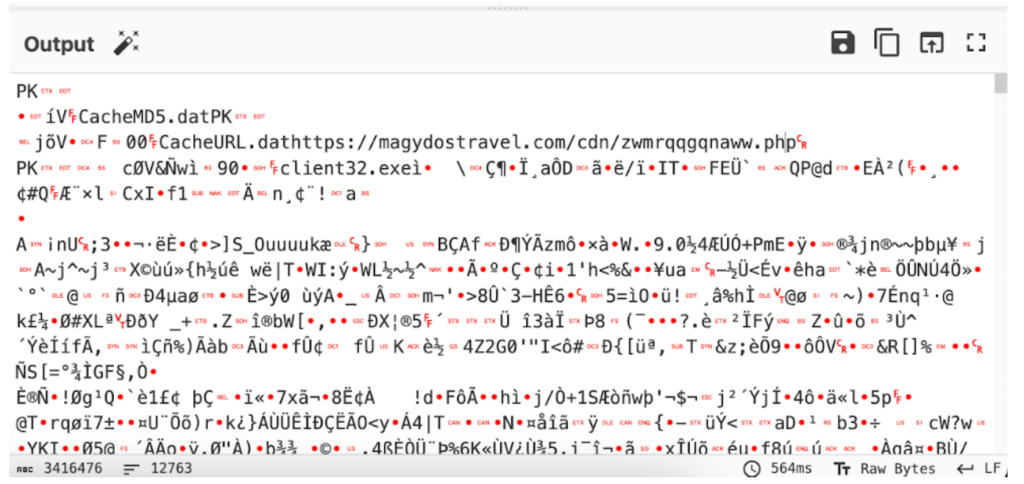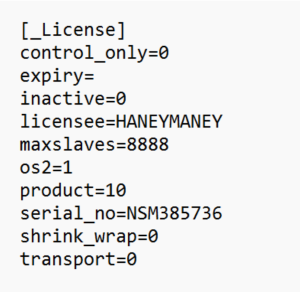Authors: Alex Murillo, Alan Ngo, Abe Schneider, Fae Carlisle
Contributors: Nikki Benoit
Executive Summary
For years, threat actors have been using legitimate software for illegitimate or malicious purposes. One such software is NetSupport Manager – a remote control application used for remote systems management. In recent years, however, threat actors have repurposed this software as a Remote Access Trojan (RAT) to infiltrate systems and utilize them as a launching point for subsequent attacks.
The Carbon Black Managed Detection & Response team, in collaboration with our Threat Analysis Unit, has observed over 15 new infections related to NetSupport RAT in the last few weeks. From the increase we noticed that the majority of the infections were from the Education, Government, and Business Services sectors. In this article we will delve into our methods for detecting and preventing this malware, along with providing valuable insights and resources for defenders.
History
NetSupport Manager began as genuine software 30 years ago for remote technical support use. The tool allowed file transfers, support chat, inventory management, and remote access. While it is legitimate software, threat actors have been using it in recent years as a Remote Access Trojan (RAT) – most notably spread in 2020 via a massive COVID-19 phishing campaign. The delivery mechanisms for the NetSupport RAT encompass fraudulent updates, drive-by downloads, utilization of malware loaders (such as GhostPulse), and various forms of phishing campaigns.
Due to its legitimate nature and widespread availability, NetSupport Manager is not exclusive to a singular threat actor. Multiple malicious entities, including the notorious TA569 – recognized for its SocGholish malware, incorporate this tool into their arsenal. Its accessibility renders it susceptible to use by a spectrum of threat actors, ranging from novice hackers to sophisticated adversaries.
Older variations of NetSupport RAT were seen utilizing .BAT and .VBS files, often used as decoys. Only one of the many BAT files being dropped would be responsible for executing the RAT and establishing persistence. We have not observed these newer variants utilizing older methods.
Carbon Black Detection & Attack Chain
In recent attacks, the NetSupport RAT has been observed to be downloaded onto a victim’s computer via deceptive websites and fake browser updates. Initial infection, however, can vary depending on the threat actor.
The following infection showcases the victim getting tricked into downloading a fake browser update after visiting a compromised website. These infected websites host a PHP script which displays a seemingly authentic update. When the victim clicks on the download link, an additional Javascript payload is downloaded onto the endpoint.
Figure 1: Fake chrome browser update presented to victim
In this example, Update_browser_10.6336.js is the downloaded payload from the fake browser update and can be seen making external network connections to implacavelvideos[.]com
Figure 2: Update_browser_10.6336.js establishing connection to implacavelvideos[.]com
Update_browser_10.6336.js then invokes powershell.exe to execute obfuscated commands which then connects to kgscrew[.]com
Figure 3: Obfuscated Powershell Command
Powershell.exe is then utilized to pass a Base64 snippet in memory, then decodes and stores the contents in a file called p.zip.
The contents of p.zip are then extracted into the directory: \appdata\roaming\divx-429\
Figure 4: PowerShell connecting to the C2 for additional payload and p.zip download.
Multiple NetSupport dependencies/DLL’s as well as the NetSupport Manager are contained within this decompressed file.
Once installed on a victim’s device, NetSupport is able to monitor behavior, transfer files, manipulate computer settings, and move to other devices within the network.
Figure 5: Numerous NetSupport files being dropped after the connection to kgscrew[.]com
Persistence is then established by adding client32.exe to the HKCU Run registry key in:
\SOFTWARE\Microsoft\Windows\CurrentVersion\Run\DIVXX or \SOFTWARE\Microsoft\Windows\CurrentVersion\Run\DIVX
Figure 6: PowerShell creates persistence in HKCU run registry
PowerShell is then utilized to invoke the NetSupport application, client32.exe, which is then used to make a connection to Netsupport RAT’s Command and Control server at 5.252.177[.]111(sdjfnvnbbz[.]pw) by executing the PowerShell script which is broken down in detail below.
Figure 7: client32.exe connecting to sdjfnvnbbz[.]pw
PowerShell Breakdown
Figure 8: MDR analyst triage
When the MDR team received this alert we observed a powershell.exe process with a very suspicious command line. Given that the .JS file was also named “update_browser_10.6336.js”, we immediately identified this as NetSupport RAT.
Further reviewing the command line, we identify a URL that gets passed to the DownloadString function to download additional payloads. In this particular attack, it’s hXXps://gamefllix[.]com/111.php?9279.
Figure 9: PowerShell command showing the gameflix[.]com/111 DownloadsString
Reverse Engineering PowerShell
When an affected endpoint makes a network connection to the compromised URL, the payload is downloaded; observed in Figure 10. The downloaded payload is the GET response of the obfuscated script from the compromised URL (gamefllix.com/111.php).
Figure 10: HTTP GET Response from gamefllix[.]com/111.php
Figure 10 shows the partial script as the full script is too long to share as an image in this article – with over 4.5 million characters. It appears to be base64 encoded so the next step is to see what it is doing using CyberChef in an attempt to decode it. Unfortunately, the output appears unreadable. It was also observed that the PK header at the beginning of the file was identified as a ZIP archive.
A few file names are seen, such as CacheMD5.dat, CacheURL.dat, client32.exe, as well as an additional URL from the CyberChef output screenshot below.
Figure 11: CyberChef Base64 decode
We took the base64 encoded contents from gamefllix[.]com and used PowerShell in a secured environment to reconstruct the ZIP archive with a simple custom script.
Figure 12: .zip file contents
From these reconstructed files, we can obtain additional information, such as Client32.ini, that contains a GatewayAddress (observed in Figure 7) when client32.exe established a network connection on port 443 using the RADIUSSecret for authentication.
Figure 13: Client32.ini contents
NetSupport Licensing information was gathered from the file named NSM.LIC. The name HANEYMANEY (observed in Figure 14 under the licensee field) has been observed by a threat actor labeled TA569 – who also has a history of delivering payloads via fake browser updates. This could be a case of a compromised and leaked license for NetSupport Manager. There may not be a direct correlation, but the behavior is suspicious at best.
Figure 14: NetSupport Licensing Information
Summary
Despite a surge in activity, the Carbon Black MDR team remains vigilant against NetSupport RAT. Our team is experienced at detecting and responding to this threat, effectively stopping the attack before it can escalate. Carbon Black is effective against NetSupport RAT due to its advanced detection and response capabilities including:
- Behavioral Analysis: Carbon Black uses behavioral analysis techniques to identify suspicious activities and behaviors associated with NetSupport RAT. This proactive approach allows it to detect new and evolving threats, including those leveraging NetSupport RAT.
- Threat Intelligence: Carbon Black integrates threat intelligence feeds into its detection algorithms. This means it can recognize known indicators of compromise associated with NetSupport RAT, enabling quick identification and mitigation of infected systems.
- Endpoint Security: Carbon Black provides robust endpoint security features, ensuring that devices are protected at the point of entry. It can block malicious websites and prevent the execution of malicious files, thwarting attempts to download and install NetSupport RAT.
- Real-time Monitoring: Carbon Black offers real-time monitoring and response capabilities. It can detect suspicious activities in real-time, allowing security teams to respond promptly to potential NetSupport RAT infections, minimizing the damage caused by the malware.
- Incident Response: In case of a NetSupport RAT infection, Carbon Black facilitates efficient incident response. It provides detailed insights into the attack, helping security teams understand the extent of the compromise and take appropriate actions to remediate the situation.
- Continuous Updates: Carbon Black regularly updates its threat intelligence databases and detection algorithms. This ensures that the system is equipped to detect new variants of NetSupport RAT and other emerging threats effectively.
By leveraging these features, Carbon Black enhances organizations’ security posture, making it challenging for threat actors to successfully operate the NetSupport RAT within their networks or escalate the attack.
Search Queries:
-
process_name:*\\appdata\\roaming\\*\\ctfmon.exe OR process_name:*\\appdata\\roaming\\*\\whost.exe OR process_name:*\\appdata\\roaming\\*\\client32.exe OR childproc_name:*\\appdata\\roaming\\*\\ctfmon.exe OR childproc_name:*\\appdata\\roaming\\*\\whost.exe OR childproc_name:*\\appdata\\roaming\\*\\client32.exe -
filemod_name:\\appdata\\roaming\\divx*\\ -
netconn_domain:kgscrew.com OR gamefllix.com
Indicators of Compromise (IOC)
Hashes
Name |
SHA256 Hash |
p.zip
|
c5c974b3315602ffaab9066aeaac3a55510db469b483cb85f6c591e948d16cfe
|
p.zip
|
8c9cd7a1ac6d4cbc641b31a3c55fde5e0e5a48c9bdaf71a59a2c4c9fd98ff9e7
|
update_browser_10.6336.js
|
46bb795f28ef33412b83542c88ef17d2a2a207ad3a927ecb4678b4ac9c5a05a5
|
CacheURL.dat
|
54b920f5b87019fcf313bec4d9f4639a932b8268e5183b29804e91e29ed6f726
|
client32.exe
|
213af995d4142854b81af3cf73dee7ffe9d8ad6e84fda6386029101dbf3df897
|
client32.exe
|
89f0c8f170fe9ea28b1056517160e92e2d7d4e8aa81f4ed696932230413a6ce1
|
Client32.ini
|
28208baa507b260c2df6637427de82ad0423c20e2bceceb92ba5d76074dcd347
|
HTCTL32.DLL
|
3c072532bf7674d0c5154d4d22a9d9c0173530c0d00f69911cdbc2552175d899
|
HTML_Obj_list.txt
|
e3665d8c5030be81a6955965c2928564fe922b9a21f9e712580d04825fa0adf1
|
nskbfltr.inf
|
d96856cd944a9f1587907cacef974c0248b7f4210f1689c1e6bcac5fed289368
|
NSM.ini
|
60fe386112ad51f40a1ee9e1b15eca802ced174d7055341c491dee06780b3f92
|
NSM.LIC
|
f4e2f28169e0c88b2551b6f1d63f8ba513feb15beacc43a82f626b93d673f56d
|
nsm_vpro.ini
|
4bfa4c00414660ba44bddde5216a7f28aeccaa9e2d42df4bbff66db57c60522b
|
pcicapi.dll
|
2d6c6200508c0797e6542b195c999f3485c4ef76551aa3c65016587788ba1703
|
PCICHEK.DLL
|
956b9fa960f913cce3137089c601f3c64cc24c54614b02bba62abb9610a985dd
|
PCICL32.DLL
|
38684adb2183bf320eb308a96cdbde8d1d56740166c3e2596161f42a40fa32d5
|
putty.exe
|
fc6f9dbdf4b9f8dd1f5f3a74cb6e55119d3fe2c9db52436e10ba07842e6c3d7c
|
remcmdstub.exe
|
fedd609a16c717db9bea3072bed41e79b564c4bc97f959208bfa52fb3c9fa814
|
whost.exe
|
b6b51f4273420c24ea7dc13ef4cc7615262ccbdf6f5e5a49dae604ec153055ad
|
TCCTL32.DLL
|
6795d760ce7a955df6c2f5a062e296128efdb8c908908eda4d666926980447ea
|
rot-13.pscript
|
2e4bd5557aedd1743da5fab1b6995fbc447d6e9491d9ec59fa93ab889d8bccd1
|
IPs/Domains |
|
https://magydostravel[.]com/cdn/zwmrqqgqnaww[.]php
|
5.252.177[.]111
|
sdjfnvnbbz[.]pw:443
|
91.219.150[.]64
|
https://gamefllix[.]com/111[.]php[?]9279
|
|
arauas[.]com
|
|
91.19.150[.]63
|
MITRE ATT&CK TIDs
TID |
Tactics |
Technique |
T1204.002
|
Execution
|
User Execution: Malicious File
|
T1059.001
|
Execution
|
Command and Scripting Interpreter: PowerShell
|
T1055
|
Privilege Escalation
|
Process Injection
|
T1027
|
Defense Evasion
|
Obfuscated Files or Information
|
T1041
|
Exfiltration
|
Exfiltration Over C2 Channel
|
T1074.001
|
Collection
|
Data Staged: Local Data Staging
|
T1547.001
|
Persistence, Privilege Escalation
|
Boot or Logon Autostart Execution: Registry Run Keys / Startup Folder
|
T1057
|
Discovery
|
Process Discovery
|



















